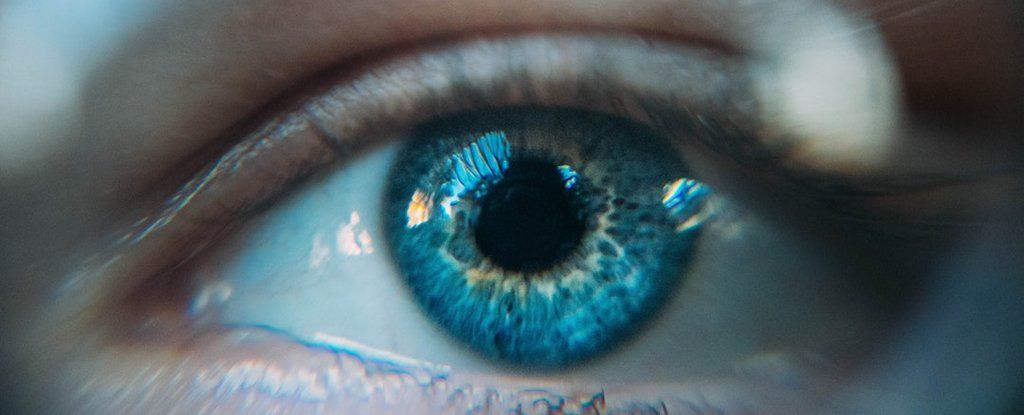https://www.spreaker.com/user/talk4media/beyond-confidence-12-18-2017
Category: biotech/medical – Page 2,852

For the last time: rejuvenation is not immortality
Whether or not immortality is possible, whether or not one would like it for oneself, it’s important to keep in mind that it is not what biomedical research against ageing is about.
When doing science, it is crucially important to have clear, unambiguous definitions. These definitions must be firmly established to avoid confusion and misunderstandings and possibly to prevent people from going around telling everyone that you’re working on something that you’re actually not.
The I-word
It’s not uncommon, especially for outsiders of a given field, to use an inappropriate word to indicate a more complex concept than the word itself conveys—maybe because they think that the two are close enough or possibly because they just don’t see the difference.

Can we reverse the ageing process?
Good stuff from Aubrey. One person is a deathist, another is a maybe, the other is pro-life extension.
Turning back the clock and undoing the ravages of time. Something we’ve probably all wondered about — but could it become reality? Or are we all just wishing our lives away?
We may soon be able to stop or even undo the ageing process. By purging the body of so-called ‘retired cells’, scientists say we could look younger, live longer, and defeat disease. Is this science’s answer to the fabled fountain of youth?
At the Roundtable was Aubrey de Grey, Biomedical gerontologist and Chief Science Officer at Sens Research Foundation; Lara Marks, a visiting Research Associate at University College London and Historian of Medicine at King’s College London; Professor Ilaria Bellantuono, Stem cell biologist and Professor in musculoskeletal ageing at the University of Sheffield and journalist Salman Shaheen.
Roundtable is a discussion programme with an edge. Broadcast out of London and presented by David Foster, it’s about bringing people to the table, listening to every opinion, and analysing every point of view. From fierce debate to reflective thinking, Roundtable discussions offer a different perspective on the issues that matter to you. Watch it every weekday at 15:30 GMT on TRT World.
Subscribe: http://trt.world/subscribe
Livestream: http://trt.world/ytlive
Facebook: http://trt.world/facebook

Humans and robots can have babies, claims AI expert
The rise of AI (Artificial Intelligence) robots can be concerning for some people but that’s not stopping them for sure. In fact, there’s a chance that the AI robots will soon have ‘children’ with their owners. Yes, human-robot babies are very much possible, according to a leading artificial intelligence expert.
Dr David Levy, who is the author of Love and Sex with Robots claims that that humans and robots will soon make babies, given the ‘recent progress in stem cell research and artificial chromosomes.’
Though Dr Levy has not given a specific timeline for robot babies, he believes that it could happen within the next 100 years.

Bio-programming toolkit maker Asimov launches with $4.7M from Andreessen Horowitz
Biotech is one of today’s many hot frontiers of technology, but one thing holding it back is that it’s significantly less amenable to traditional computing techniques than other areas. A new startup called Asimov, spun off from research at MIT, is working on bridging the gap between the digital and the biological by creating, essentially, a set of computer-aided biology design tools. It’s a prescient enough idea that it has attracted $4.7 million in seed funding.
The problem that Asimov addresses is this. Say you’re a pharmaceutical company trying to make a tiny biocompatible machine that holds a certain amount of medication and releases it when it senses some other molecule.
In order to do so, you’d have to — well, among about a million other things — design what amounts to a logic gate and signal processor that works at the molecular scale. This is a daunting prospect, as creating molecular machinery is a labor-intensive process often involving creating thousands of variations of a given structure and testing them repeatedly to see which works.

FDA Just Approved The First-Ever Gene Therapy For an Inherited Disease
In a historic move, the Food and Drug Administration on Tuesday approved a pioneering gene therapy for a rare form of childhood blindness, the first such treatment cleared in the United States for an inherited disease.
The approval signals a new era for gene therapy, a field that struggled for decades to overcome devastating setbacks but now is pushing forward in an effort to develop treatments for haemophilia, sickle-cell anaemia, and an array of other genetic diseases.
Yet the products, should they reach patients, are likely to carry stratospheric prices – a prospect already worrying consumer advocates and economists.

Conference announces Program and Speakers
2018 announces Program and Speakers!
This conference is focused on the cellular and molecular repair of age-related damage as the basis of therapies to bring aging under full medical control, It will mirror the structure of SENS, with sessions devoted to each strand and to the enabling technologies that multiple strands will rely upon. Sessions will cover a wide range of topics across the damage-repair spectrum.
Further details are given below:
Accelerating rejuvenation therapies to repair the damage of aging. Berlin, March, 15 — 17.
Great Support During Project For Awesome 2017
The 2017 Project for Awesome (P4A) has ended, and what a weekend it has been! We have had a significant number of videos created in support of our work, and the encouragement from the community has been superb. It is very inspiring to hear what people have to say about the importance of our work and why they appreciate the work we do. Today, we wanted to have a look at some of the great videos created by the LEAF team and our awesome community.
LEAF President Keith Comito led the charge during P4A and talks about our motivations and our vision for a world without age-related diseases. Science is making huge leaps in progress, and we no longer have to accept age-related diseases as inevitable.
